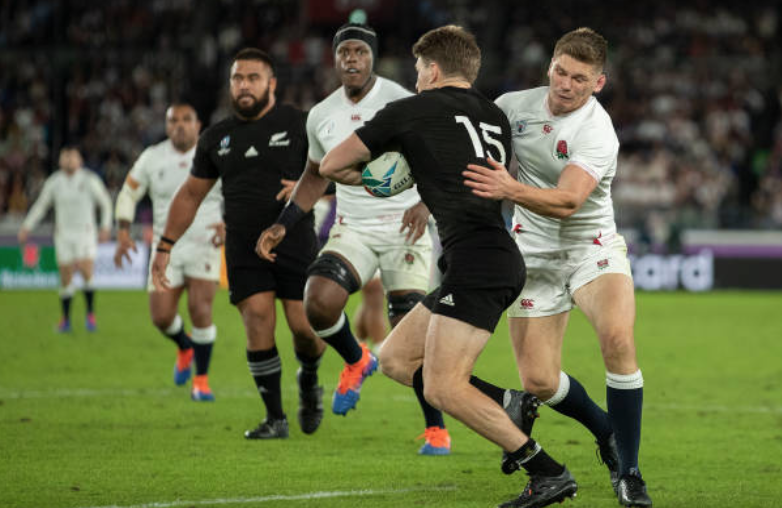DYLAN JACK looks at where the World Cup semi-final between England and New Zealand in Yokohama on Saturday was won and lost.
FAST START
South African fans saw this in England’s three-match series in 2018. Eddie Jones’ side tends to execute whatever attacking plan they have been saving for the match from the first whistle. It was no different against the All Blacks. England worked their way upfield as Anthony Watson broke through the defence out wide. After a couple of strong carries from their forwards, centre Manu Tuilagi was able to pick the ball up from the back of a ruck and dive over the line from close range in just the second minute of play.
This was exactly what Jones would have wanted from his men. It gave England something to defend towards the middle of the first half when the All Blacks started to work their way back into the match.
TERRITORY
England’s control of the semi-final was illustrated in the areas where the All Blacks were forced to attack from. Generally speaking, the All Blacks prefer to launch their attacks between the opposition 22m and 10m line.
However, against England, a wide majority of their attacks started in their own half. Out of the 47 attacking opportunities New Zealand had in the match, 35 of them started in their own half and 19 from their own 22. Only on four occasions were New Zealand able to start anything in England’s 22.
ALSO READ: Relentless England earn deserved award
SET PIECE and BREAKDOWN
The English pack was excellent in the semi-final as they disrupted New Zealand whenever it looked like the All Blacks were building momentum in attack. The lock duo of Maro Itoje and Courtney Lawes outplayed their New Zealand counterparts, winning 13 lineouts and poaching two between them. In total, Itoje won three turnovers in a display that earned him the Man of the Match award.
England’s loose-forward duo of Tom Curry and Sam Underhill worked ferociously at the breakdown, winning a combined three turnovers. Bereft of any stable platform, New Zealand struggled to get their gamebreakers into the match. New Zealand coach Steve Hansen’s decision to start Scott Barrett, normally a lock, at flank looked to have backfired. While Barrett was excellent in open play and made a crucial tackle on English wing Jonny May, he did not give the All Blacks the go-forward or stability at set piece that would have been expected from him.
KICKING and DEFENCE
England’s territorial dominance had plenty to do with both their tactical kicking and defensive gameplan. Playmakers Owen Farrell, George Ford and Ben Youngs were particularly impressive in this regard, as they took control of the semi-final, getting England upfield with a number of well-placed kicks. In total, the trio put boot to ball 25 times. New Zealand’s playmakers Barrett, Richie Mo’unga and Aaron Smith kicked the ball a combined 22 times.
A kick is only as good as its chance and follow-up defence, though, but that is what England got spot on. Assistant coach John Mitchell has definitely had a positive impact on this team since joining halfway through last year and taking on the responsibility of organising the defence. Sam Underhill finished as England’s top tackler in the match, completing 14 of his attempted 16 tackles, and was closely followed by Itoje, who completed 13 tackles.
Farrell and Ford, normally seen as defensively weak, also deserve praise for stepping up in this area. Ford missed only two of his 13 tackles, while Farrell missed six of his 15 attempts, leaving both with positive percentages.
Photo: David Ramos – World Rugby/World Rugby via Getty Images





